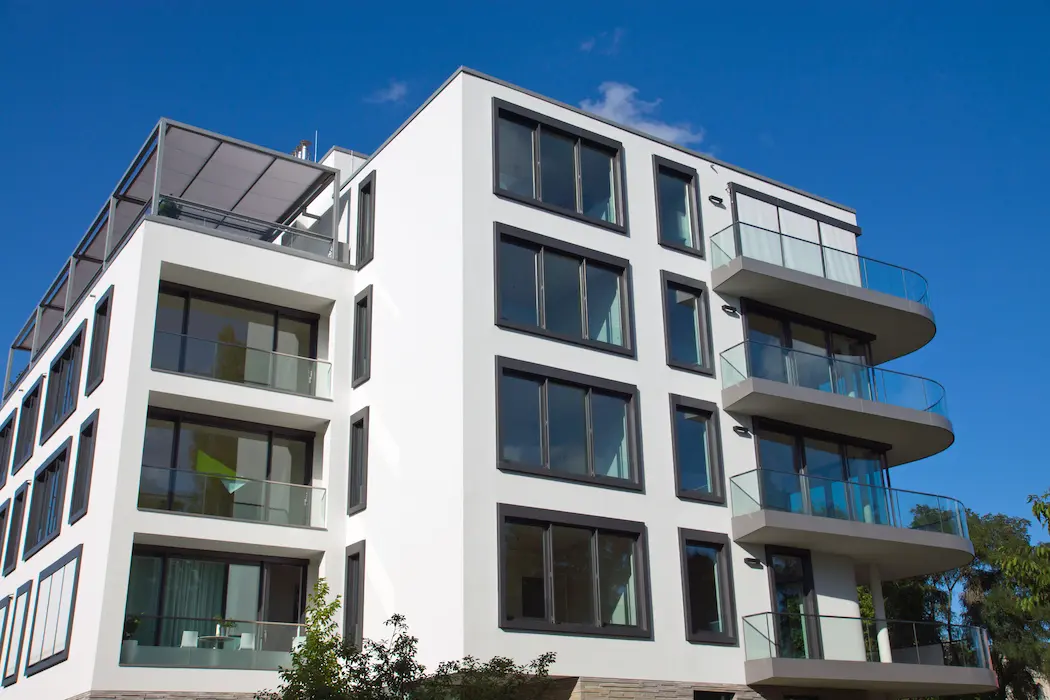
How does a Real Estate Syndication work
Real Estate Syndication is a method of pooling money from investors to purchase, invest in, develop or reposition a large real estate project. The project can run into several million dollars plus & is prohibitive for a single investor to manage on their own from an investment, management & expertise perspective.
A syndicator, or a sponsor, is often a general partner or a general partnership that is responsible for putting the entire project together. Real Estate is a team sport and requires expertise of various skill set: lending, financial analysis, underwriting, asset management, project management, capital raising, accounting, taxation, local zoning, market & research analysis, legal, rehabbing & construction management.
It is not uncommon to see several sponsors working together to set up real estate syndications, manage operations & reporting, communicate with investors, source financing, raise money, educate investors & make day to day decisions including when to sell a project.
General partners are responsible for overall project management and day to day operations. Limited Partners are passive investors & owners without any involvement or decision making in the real estate syndicated project. Their primary role is to provide capital for the project.

How Interest Rate hikes are impacting multi-family
In 2022, the Federal Reserve raised rates by 75 bp four consecutive times starting in June, once by 50 bp in December & most recently by 25 bp in February. The U.S. inflation rate hit its 2022 peak in July at an annual rate of 9.1%. The last time consumer prices were rising this fast was back in 1981—over 40 years ago. Since March 2022, the Fed has been actively trying to decrease inflation. In order to do this, the Fed has been hiking its benchmark borrowing rate—from effectively 0% back in March 2022 to the current range of 4.25% to 4.50%. And it is expected to lift interest rates until inflation reduces to the fed’s target rate of 2% - a level they consider needed to stabilize prices. Recent inflation data ending January 2023 measured inflation at an annual rate of 6.4%. This data shows high interest rates are possibly here to stay at least in the short term. Unexpected national and international geopolitical uncertainties may continually arise, resulting in market volatility and interest rate fluctuations.
Interest rate volatility is the greatest risk today in closing a multi-family property. Once a potential property is under contract, and by the time the debt is locked in, who knows what the rate could be? If one can completely remove that risk from the equation, one can focus on the fundamentals. The cost of long-term borrowing has just about doubled since the beginning of 2022. Headwinds, including rising rates, declining leverage and larger equity checks are continuing to put pressure on returns & will continue to impact the market. Many in the investment community worry that increasing interest rates in the coming year might have an adverse effect on their apartment property values and result in rising cap rates for the first time in over a decade.
In this environment, experienced real estate investment firms are focusing on properties with assumable debt with a lower-than-market interest rate. Sellers with properties that have assumable loans can expect to attract a larger pool of potential buyers and generate a higher sale price. By assuming the loan, one can mitigate interest rate risk and ultimately underwrite a greater leveraged return than would have been possible otherwise. The attractiveness of an assumable loan largely depends on the length of the term remaining and buyer’s expected hold period.
Geopolitical and economic uncertainty, coupled with the increasing cost of capital resulting from the rising interest rate environment, have put a damper on multifamily sales activity. Banks, pension funds and even some alternative lenders have pulled back on their financing, making multifamily transactions harder to complete.
The underlying multifamily fundamentals are still good. Though rent increases are expected to moderate, overall demand for housing is robust. Lack of affordable housing will also continue to drive demand; higher mortgage rates and lack of affordability in single-family will benefit multifamily. Demand in the rental market is expected to remain strong with the alternative for-sale market becoming less affordable. But at the same time, new supply may slow due to the increasing cost and declining availability of construction financing.

Apartment Syndication Terminology - Part 2
Key Principal: Key Principal is a high net worth individual who has the balance sheet to guarantee the loan. In most syndications, this often members of sponsor team or general partner.
K-1: A tax form provided at year end to all partners of an LLC that have an ownership interest in the Investment. It summarizes their investment basis and their share of profit and loss from operations.
Metropolitan Statistical Area: Metropolitan statistical area (MSA) is the formal definition of a region that consists of a city and surrounding communities that are linked by social and economic factors. Metropolitan statistical areas serve to group counties and cities into specific geographic areas for population censuses and compilations of related statistical data.
Net Operating Income: This computation is derived after deducting total operating expenses form total operating revenue.
Non-Recourse Loan: A loan in which a lender can go after the collateral (real estate) but has no recourse to pursue borrower personally.
Operating Agreement: A legal document commonly used in the LLC to outlines the responsibilities, decision making and ownership percentages for the general and limited partners in an apartment syndication.
Physical Occupancy Rate: This is derived by dividing number of occupied units by number of units.
Preferred Return: In some syndications, sponsor gives agreed upon percentage return to investors first (preferred) before sponsor takes their share.
Private Placement Memorandum (PPM): A legal document that outlines the terms of the investment and the primary risk factors involved with making the investment. Providing a PPM to the investor is necessary for anyone selling securities, such as a real estate syndicator.
Pro forma: Broker provides a projection of property’s future cash flows based on current market conditions and comps.
Rent Roll: A report listing of tenant’s names, occupancy, unit mix, unit size, unit number, current leased rent, market rent, security deposit, past due balance, lease duration & additional charges for water, trash & pest control if applicable.
Return hurdle: The rate of return that, when achieved, triggers a disproportionate profit split.
Reposition: A strategy used by the sponsor to rebrand the property & add value through interior upgrades & exterior improvements.
Return on Investment: Total annual return inclusive of cash flows and profits upon sale divided by original investment amount.
Subscription Agreement: A document that is a promise by the LLC that owns the property to sell a specific number of shares to a limited partner at a specified price, and a promise by the limited partner to pay that price.
Syndication: Apartment syndications are essentially real estate partnerships pairing passive investors, capital, and a syndicator (sponsor or active partner and promoter) who organizes the deal, puts it together, and manages.
Underwriting: The process of financially evaluating an apartment community to determine the projected returns, offer price, future value & risks.
Vacancy Loss: Amount of loss of rent caused by unoccupied unit.
Value Add Property: The term used to describe a property that offers the opportunity to increase cash flow or value through renovations, rebranding, or increased operational efficiencies.
Yield Maintenance: A pre-penalty paid by the borrower on a loan is the principal is paid off early.
Waterfall: A method for splitting profits among partners in a business deal that allows for said profits to follow an uneven distribution. In a waterfall model, payouts change when previously agreed upon return hurdles are met. Preferred return, IRR and hurdles are few examples.
1031 Exchange: IRS code that allows seller of real property to sell the property & defer capital gains tax if the proceed are invested in another property of at least same or greater value.

Apartment Syndication Terminology - Part 1
Accredited Investor: To be an accredited investor, a person must have an annual income exceeding $200,000 ($300,000 for joint income) for the last two years with the expectation of earning the same or a higher income in the current year. A person is also considered an accredited investor if they have a net worth exceeding $1 million, either individually or jointly with their spouse not including the primary residence.
Acquisition Fee: Initial fee charge by the general partners in a real estate syndication for sourcing, purchasing, financing, managing & closing on an investment property. This fee is paid by the limited partners to general partners upon closing on the investment.
Annualized Return: Total return on investment divided by number of years.
Asset Management Fee: Monthly fee paid to general partners in a syndication for day-to-day management of the asset.
Breakeven Occupancy: Occupancy rate required to pay all your expenses and loan payment.
Bridge Loan: A short term floating interest rate loan primarily used to reposition the property prior to sale or permanent financing.
Capital Expenditures: Expenses incurred to significantly upgrade & renovate a property. These expenses are one time and tracked separately from day-to-day operating expenses.
Capitalization Rate: Market cap rate is the most barometer used in commercial property to assess market value of the property. It is simply return rate calculated by dividing Net Operating Income by the purchase price of the property.
Cash Flow: Profit left after deducting expenses & loan payment.
Cash on Cash Return: It is a rate of return calculation that only measures profits from cash flows as a percentage of invested capital. It is derived by dividing cash flows by initial invested capital.
Debt Service: Mortgage payment including principal and interest.
Debt Service Coverage Ratio (DSCR): This calculation is derived by dividing annual debt service by net income. This ratio will be 1.0 if debt service and cash flow is same; an indication to lender that property is not generating enough income to satisfy debt. A ratio of minimum 1.2 or better is normal required by lenders to obtain permanent financing.
Depreciation: Accounting term used to allocate and write off cost of an asset such as real property over a period. Syndicators often look for accelerated depreciation methods that allow bigger write off thereby reducing net income for tax purposes. Depreciation is book entry and has no effect on cash flows.
Due diligence: This is a process of physically inspecting the property & documents such as leases, financial records, zoning & surveys to confirm it is what the seller represented.
Earnest Money: A refundable or non-refundable deposit that the general partner places in escrow upon executing a purchase contract.
Economic Occupancy Rate: This is an important indicator of how well property is collecting rent. This ratio is based on rental collections divided by billing. A rate of 92% may represent 8% tenants are not paying rent or paying late.
Equity Investment: Investment needed to purchase the property inclusive of closing cost, capital expenditures, reserves, and any general partner fees.
Equity Multiple: Rate of return barometer used by the investor to evaluate return on investment. An equity multiple of 2.0 means one has doubled their investment. If this took 4 years, then a simple rate of return will be 25%
Gross Potential Rent (GPR): The potential amount of rental revenue if the apartment community was 100% leased year-round at market rental rates without vacancy.
Internal Rate of Return: Internal rate of return (IRR) is the percentage of returns that a project will generate within a period to cover its initial investment. It is attained when the Net Present Value (NPV) of the project amounts to zero. The internal rate of return (IRR) determines the worthiness of any project.
Letter Of Intent: An LOI is a non-binding agreement provided by a buyer proposing their purchase terms. Typically used as a speedier method to make an offer, without legally tied into the deal.
Loan to Value: This is a measure of percentage of loan offered based on purchase price without including any closing cost. The ratio of the value of the loan amount divided by the apartment’s purchase price.
Loss to Lease: Lost revenue by comparing market rent versus actual leased rent. This can be an opportunity to improve operations by increasing rents to market.
